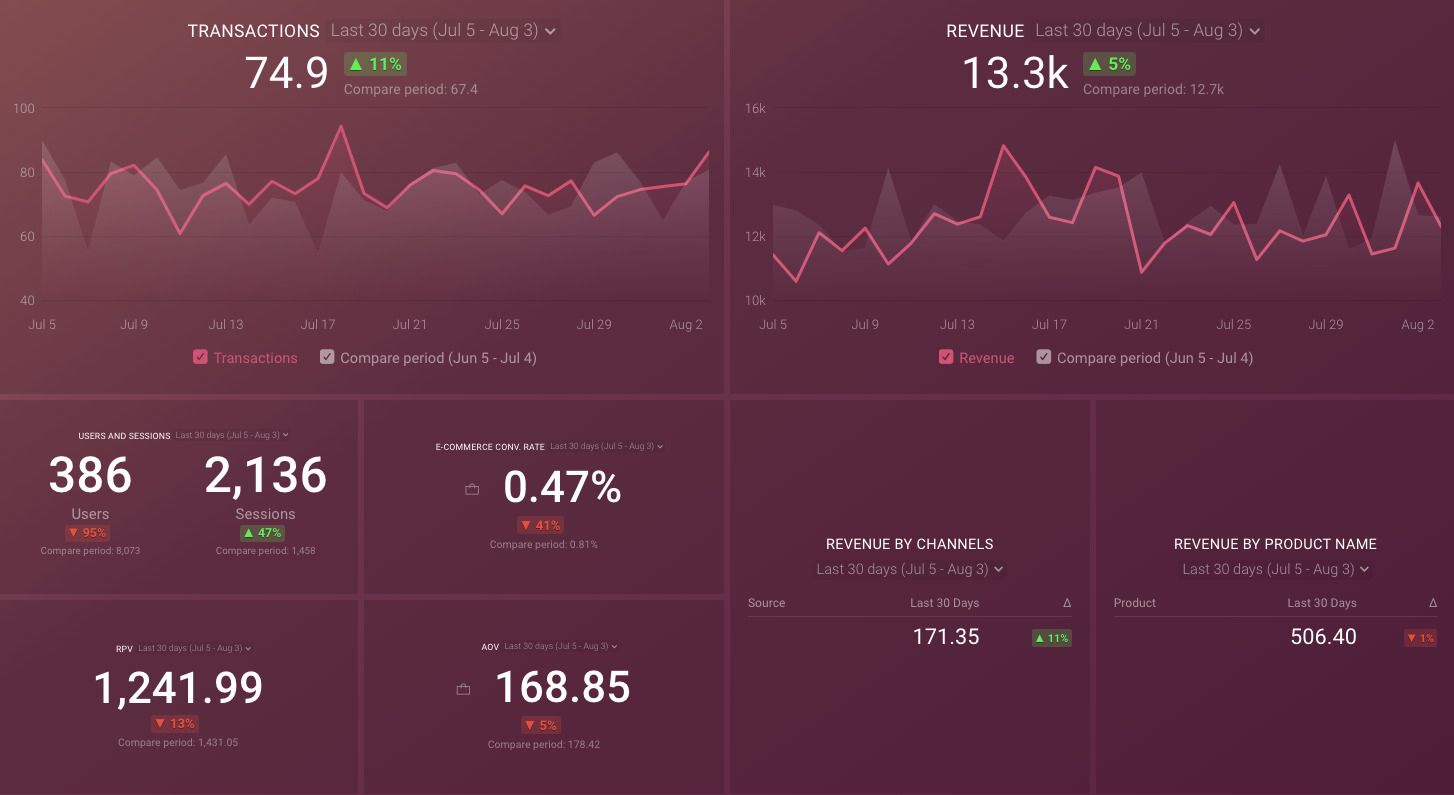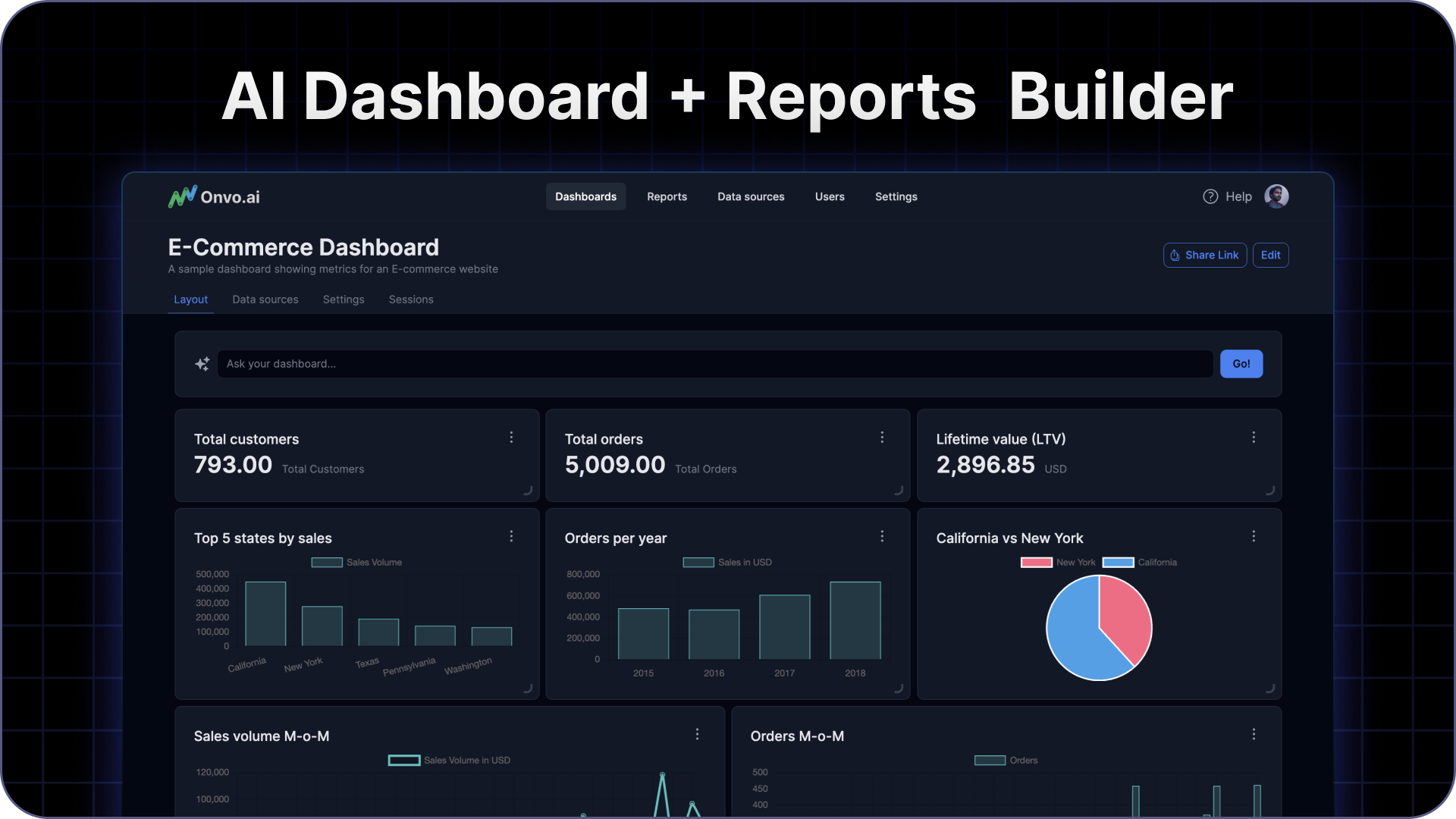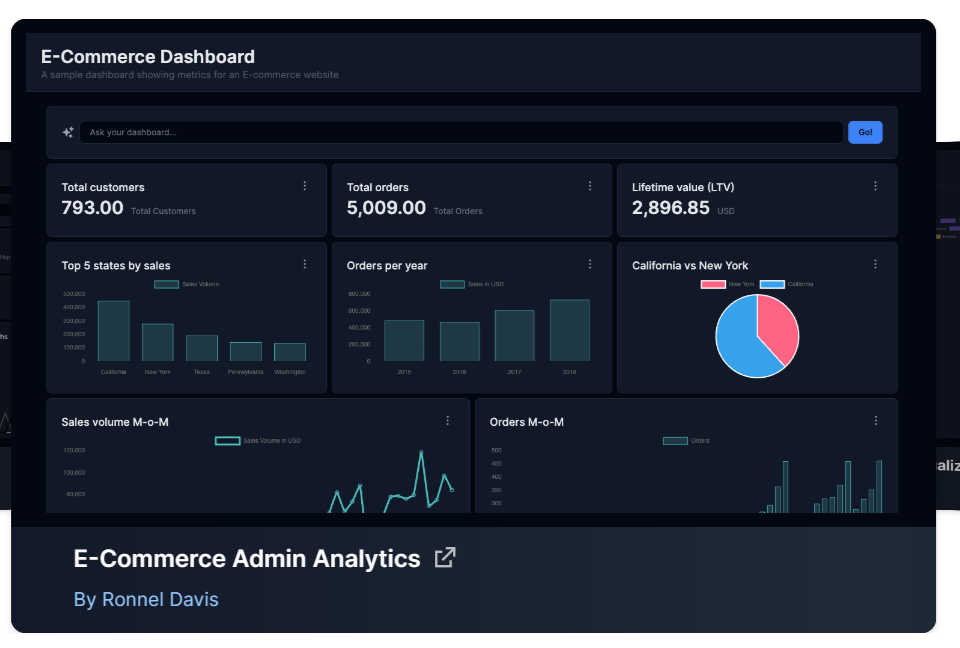
8 Essential Ecommerce Google Analytics Dashboards Recommended by E-commerce Experts
Streamlining Your Ecommerce Insights with Google Analytics Dashboards
E-commerce analytics are your compass in the digital marketplace. They help you understand what's happening with your online store, enabling you to make data-driven decisions that propel your business forward. The good news? Google Analytics provides a powerful and free platform for tracking these insights.
However, sifting through the vast array of data it provides can be overwhelming. E-commerce dashboards tailored to Google Analytics metrics are here to rescue you from data overload. In this blog post, we'll delve into the world of Google Analytics e-commerce dashboards, showcasing their significance and how to leverage them effectively. We'll cover a range of essential topics:
A. What is an E-commerce Analytics Dashboard and Why Do You Need One?
Imagine a streamlined portal to your e-commerce data – that's what an e-commerce analytics dashboard represents. These dashboards are visualizations that focus on your store's data, making it easier to draw insights, enabling you to track essential metrics at a glance, and simplifying data communication.
Benefits of Ecommerce Dashboards:
- Efficiency: Dashboards save you time and expedite decision-making by providing quick access to vital metrics.
- Better Data Literacy: They make data more comprehensible to your team, regardless of their level of expertise.
- In-Depth Analysis: By focusing on critical data, you can analyze your most important metrics more thoroughly.
- Clear Communication: Concise visualizations enhance data communication and secure buy-in from stakeholders.

B. What Does a Good E-commerce Analytics Dashboard Look Like?
To make the most of your ecommerce dashboard, remember these best practices:
- Prioritize Important Metrics: Highlight crucial metrics at the top or in a prominent location.
- Visual Appeal: Use colors wisely to emphasize data highs and lows and choose suitable visualizations for each metric.
- Conciseness: Include only essential metrics necessary to achieve dashboard goals.
- Relevance to Business Goals: Align your dashboard with your primary business objectives and sub-goals.
PRO TIP: Simplify E-commerce Data
Optimizing your e-commerce store's performance requires access to actionable data. To simplify this, we've created a concise dashboard template tracking essential metrics for analyzing core aspects of your e-commerce business, such as transactions, sales volume, website traffic trends, and more. Our template offers insights into:
- Transactions and orders
- Sales volume and trends
- Website traffic trends
- Conversion rates
- Revenue per customer
- Amount per transaction
- Best-selling products

C. 5 KPIs and Metrics to Include in Your Analytics E-commerce Dashboard
Now that you understand the significance of e-commerce dashboards let's explore five key performance indicators (KPIs) and metrics that should be part of your analytics e-commerce dashboard:
- Conversion Rate: The percentage of visitors who make a purchase.
- Shopping Cart Abandonment Rate: The percentage of visitors who add items to their cart but don't complete the purchase.
- Average Order Value (AOV): The average amount spent by customers per order.
- Customer Acquisition Cost (CAC): The average cost of converting a visitor into a customer.
- Customer Lifetime Value (CLV): The total average revenue generated by a customer over their interaction with your business.
These metrics offer insights into customer behavior at different stages of their purchasing journey. They help you understand who's interested in buying, what they want to purchase, and the value they bring to your store.
D. How to Set Up Your Google Analytics E-commerce Dashboard
Before you start building your e-commerce dashboard, ensure your Google Analytics account is set up to track e-commerce data. Then, connect your Google Analytics account to e-commerce reporting software like Onvo. Onvo simplifies the integration process, allowing you to choose your data source, connect your account, and decide what metrics to track on your dashboard.
Now you have a Google Analytics e-commerce dashboard ready to empower your online store with data-driven insights.

E. 8 E-commerce Google Analytics Dashboard Templates for Instant Insights
Finally, we asked 20 ecommerce experts about their top Google Analytics ecommerce dashboard templates to help you understand their priorities. These experts manage single-brand stores, multi-brand stores, or analyze data for marketplaces, providing diverse insights into the most valuable dashboard templates.
Let's explore the top 8 e-commerce dashboard templates as recommended by these experts:
1. E-commerce Overview Dashboard
Recommended by Maggie Simmons from Max Effect Marketing, this dashboard provides a comprehensive overview of your ecommerce transactions, revenue, and visitors. Key metrics include transactions, total revenue, revenue by channel, users and sessions, ecommerce conversion rate, revenue per visitor (RPV), and average order value (AOV).
2. Audience Overview Dashboard
Ryan Stewart of Webris suggests the Audience Overview dashboard. It focuses on your audience's behavior, including metrics like users, sessions, bounce rate, and average duration. By understanding where your users come from, you'll gain insights to optimize your store effectively.
3. Sales Performance Dashboard
Kurt Walker from Mill City Home Buyers and Elisa Bender from Revenue Geeks recommend the Sales Performance dashboard. It's all about sales, covering metrics like visits, percentage of visitors who buy, gross revenue, average order value, and more. These metrics offer a comprehensive view of your sales performance.
4. Product Performance Dashboard
Kyla Smith from Evolve Fit Wear uses the Product Performance dashboard, emphasizing metrics like product revenue, unique purchases, average price, and cart-to-detail rate. This helps identify your best-sellers and underperforming products, enabling you to make data-driven decisions.
5. Customer Checkout Behavior Dashboard
Jeffrey Aspacio at RedLettersPH highlights the importance of the Customers Checkout Behavior dashboard. This dashboard, configured with Enhanced E-commerce, tracks user behavior in the checkout funnel, providing insights into session drop-offs and error tracking. It's essential for a smooth customer acquisition process.
6. Acquisition and Conversion Dashboard
Jared Hendricks from Feruo uses an Acquisition and Conversion dashboard based on Universal Analytics (UA). This dashboard helps determine the most valuable customers, track the effectiveness of marketing efforts using UTM tags, and analyze user behavior to improve the landing page.
7. Customer Shopping Behavior Dashboard
David Lee from Neutypechic recommends the Customers' Shopping Behavior dashboard. It measures customer motivations, dwell time, types of purchases, and more. Insights gained can be used to fill marketplace gaps and understand customer preferences.
8. Email Campaign Performance Dashboard
Chris Walker of Legiit highlights the significance of Email Campaign Performance. This dashboard reports on email campaign performance, including bounce rates, traffic, and revenue. It's crucial for enhancing email marketing strategies.
By using these dashboard templates, you can customize and tailor your analytics to gain deeper insights into various aspects of your e-commerce business.
Dive into the world of data-driven ecommerce by using these recommended dashboard templates and make informed decisions to elevate your online store's performance.

Stay tuned for more insights and updates from the world of data-driven decision-making with Onvo.
